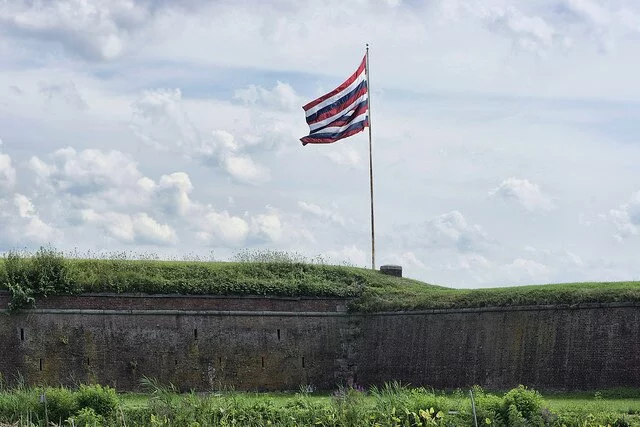 The story of the PA State Navy is relatively unknown even in professional historical circles. One of our missions as a 501(c)3 is to correct that omission. The information presented on the website has been culled from various primary and secondary sources and is by no means a complete accounting of the historic service provided by the the PA State Navy in the defense of the Delaware River and the city of Philadelphia.
The story of the PA State Navy is relatively unknown even in professional historical circles. One of our missions as a 501(c)3 is to correct that omission. The information presented on the website has been culled from various primary and secondary sources and is by no means a complete accounting of the historic service provided by the the PA State Navy in the defense of the Delaware River and the city of Philadelphia.
On June 30th, 1775 the Pennsylvania Assembly voted to form the Committee of Safety to deal with preparations for the impending conflict with England. The resolution stated: That this House approves the Association entered into by the Good People of this Colony for the Defense of their Lives, Liberty and Property. Benjamin Franklin was chosen President of the Committee and quickly set about creating a State naval force and a series of land based alarm posts. On July 6, 1775 the Pennsylvania State Navy was formed for the defense and safety of Philadelphia’s waterborne approach – the Delaware River.
May 6, 1776 — The PA Navy engages HMS Roebuck and HMS Liverpool. After a brief engagement, both British ships were forced to withdraw below Newcastle, Delaware.
September 11, 1777 — As the British army marches towards Philadelphia, Washington’s army tries to stop their advance. The PA Navy row galley, Ranger, is stripped of its crew and sent with its captain, John Mitchell, to join the militia and engage the British at the Battle of Brandywine.
Autumn, 1777 — As the Royal Navy attempts to force its way up the Delaware River to resupply Redcoat troops in Philadelphia, it was left to Fort Mifflin, Fort Mercer, the Pennsylvania State Navy, and other fortified posts along the Delaware River to slow their advance. The Pennsylvania State Navy saw action during the Hessian attack on Fort Mercer and the destruction of Billingsport, and played a vital role in maintaining the Cheveau de Frise river obstructions and the State’s fleet of fireships.
On October 23, 1777, the British flagship, AUGUSTA 64, ran aground mid-channel off Fort Mifflin. While under constant fire from Navy gunboats and Fort Mifflin, a fire broke out on board the ship and the AUGUSTA exploded.
After the fall of Fort Mifflin and Fort Mercer, several State Navy vessels made their way north past Philadelphia where they were scuttled to avoid capture. The larger State ships were set on fire by their crew to keep them from falling into British hands.
April, 1778 — The remainder of the Pennsylvania squadron was dismantled and sunk and most of the crews dismissed. That summer the British left Philadelphia, never to return while Commodore Hazelwood began raising his sunken vessels. Three galleys and three armed boats were fitted out, rearmed, and manned, while the bulk of the men of the Pennsylvania State Navy were discharged with thanks by the end of the summer of 1778.
